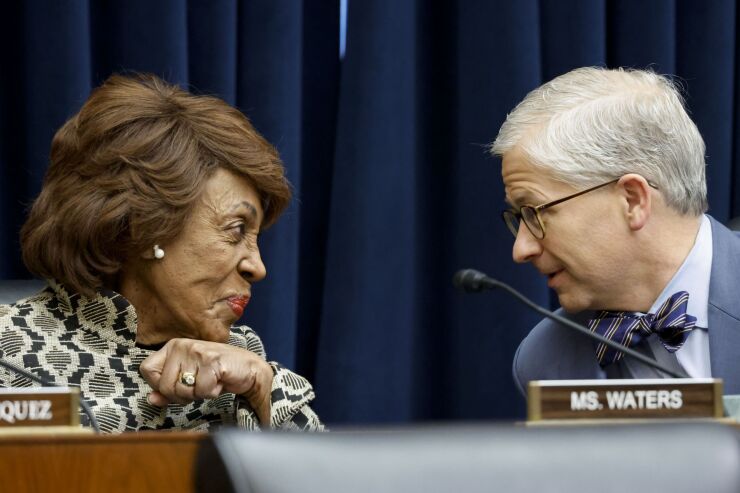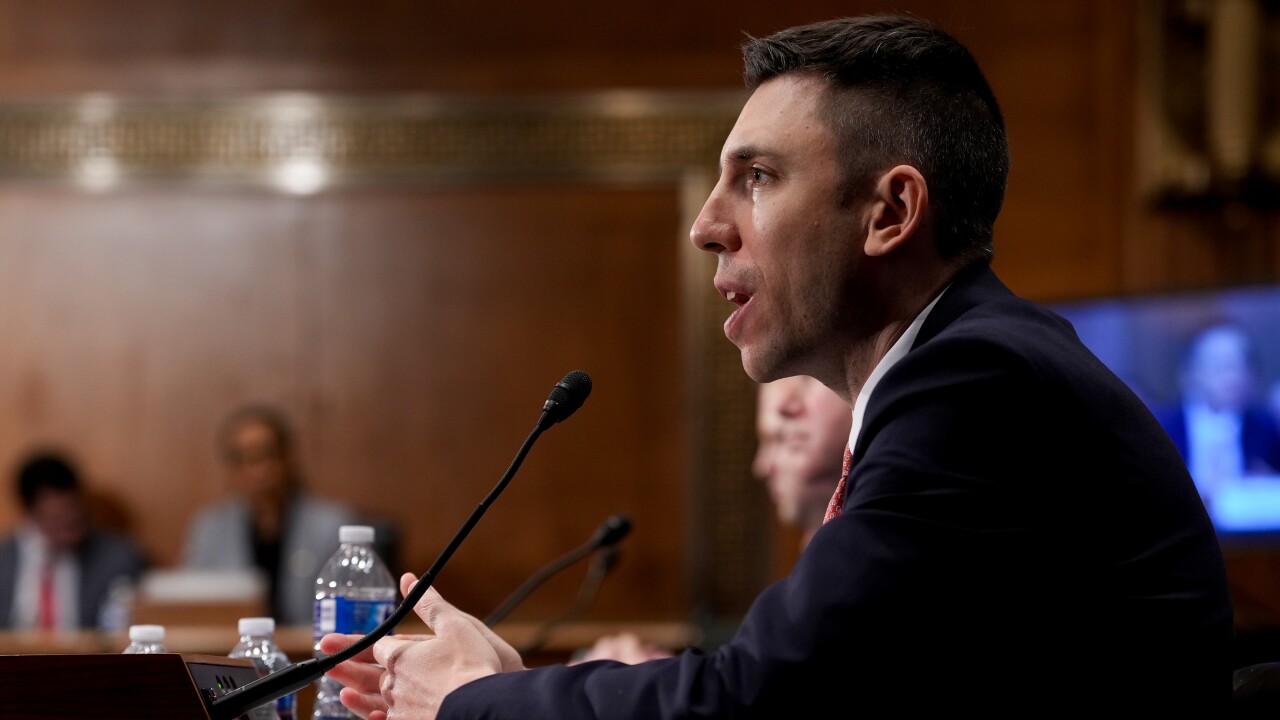
WASHINGTON — A
House Republicans, who earlier this week
One of the
Even that would likely have massive implications for banks, according to Mark Flannery, a professor at the University of Florida and former chief economist at the Securities and Exchange Commission. Flanery also held several senior research positions at the Office of Financial Research and the Federal Deposit Insurance Corp.
The paper comes just before
Stablecoins could draw a substantial amount of deposits away from banks, Flannery says in the paper, provided those banks aren't where stablecoins are holding their reserves. The entrance of reliable stablecoins to the market — ones backed, as suggested by lawmakers, by highly liquid assets or special reserves, would glum up deposits in those stablecoin issuers — causing those deposits to flee from the banking system.
That shift could encompass around 20% of current U.S. bank deposits, Flannery said, citing a similar analysis by the Bank of England. Flannery finds that figure "plausible" because of how banking deposits behaved after Money Market Funds grew in popularity.
"There is a strong analogy between potential stablecoin disintermediations and the ability of money market funds to draw deposits out of the banking system in the 1970s and 1980s," Flannery said in the paper.
Flannery said that MMFs offered liquid access to stable-value mutual fund shares, all while paying higher rates than those allowed on bank deposits.
"The potential rate advantages constituted a major part of the MMF value proposition; offsetting that advantage to some extent was the MMFs' lack of FDIC insurance," he said.
This shift would disproportionately affect small banks, he said. While larger banks would mostly replace funds lost to stablecoin issuers by issuing wholesale deposits, that's less feasible for smaller institutions. The issue of deposit flight from small banks to larger ones has taken on increased weight in the aftermath of the failure of Silicon Valley Bank and Signature Bank as large depositors look for safe places to park their cash.
"Not only would many small U.S. banks be unable to raise that much wholesale money, but they are also unlikely to be favored as places for stablecoin issuers to hold their deposit reserves," Flannery said. "If stablecoin disintermediations shift bank assets from small to large institutions, banks available credits for small businesses could be substantially affected."
IntraFi, a fintech that helps depositors stay under the $250,000 FDIC insurance limit, proposed the topic of the paper and compensated Flannery for the time spent on it, although Flannery said that "analyses and opinions expressed are my own."






